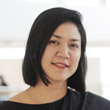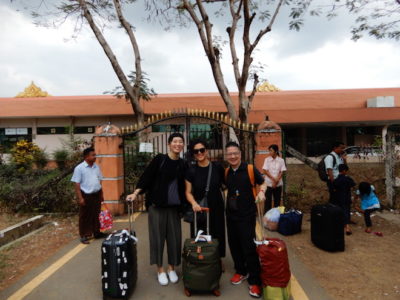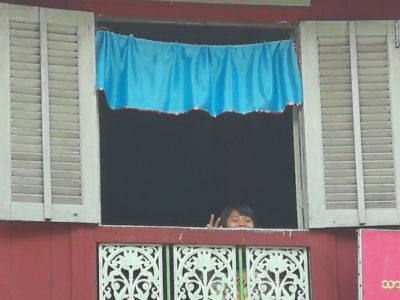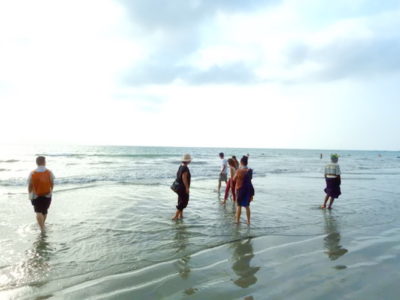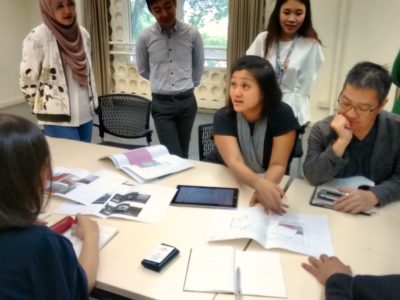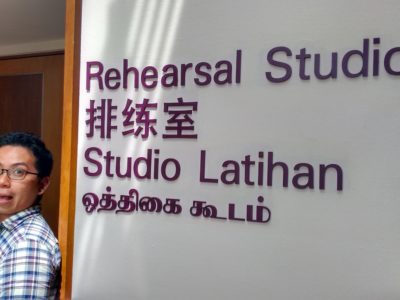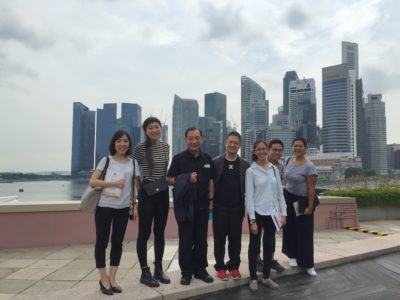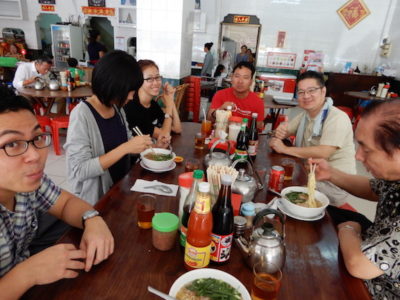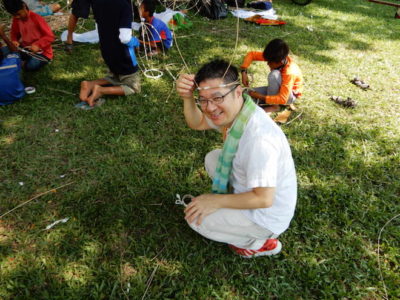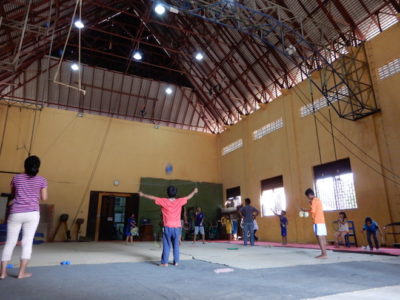Home » Research Visit Reports » Adjjima Na Patalung
Asian TYA Network
Singapore and Kuala Lumpur visits
Dates: 21- 24 November 2016
Visiting Group:
ricca ricca *festa (Japan): Hisashi Shimoyama and Nao Miyauchi
Japan Foundation Asia Centre (Japan): Yumi Sakai
Little Door Festival (Malaysia): Liew Kung Yu (Coordinator for Kuala Lumpur) and Gaik Cheng Koe
La Salle College of Arts (Singapore): Caleb Lee (Coordinator for Singapore)
BICT Fest - Bangkok International Children’s Theatre Festival (Thailand): Adjjima Na Patalung
Overviews
This visit to Kuala Lumpur (KL) and Singapore followed on from the first Southeast Asian TYA meeting at ricca ricca *festa 2016 in Okinawa last July between professionals and creatives from 8 countries. Initiated and supported by ricca ricca *festa and the Japan Foundation Asia Centre. The visit was a way forward from the previous meeting, as it provided opportunities for the existing and emerging international festivals of TYA in Japan, Malaysia, Singapore and Thailand to meet and exchange ideas for the future development of TYA in Southeast Asia, as well as making connections with established institutions and organizations that have been actively running and developing programs for TYA within the arts and education in Singapore. The visit also provided a chance to be introduced to venues, arts spaces and local TYA artists and professionals actively working in both cities. The trip was a rich with many positive prospects.
The experience provided me as a festival organizer from Thailand with more information about the current situation, development, trends and activities involving TYA in the two neighboring countries. My report will be a broad overview of the visit, and an account of my experience. I was honored to be a part of this trip, as a representative of a new festival in Thailand.
Singapore:
It is inspiring to have witnessed how the TYA is so advanced and developed in Singapore. It reinforces the idea that government support and investment in art and culture is a key to progress and makes a huge impact on the development of the contemporary art as well as the preservation of traditional culture. Singapore is well equipped with hi-tech and high standard art venues and resources of skilled artists, specialists and academics, focusing their work specifically in TYA.
The places we have visited were:
1. Children and Youth Department, The Esplanade
We met Chua Lik Ling, the head of department and her team. We were given a guided tour around the Esplanade seeing the auditoriums, studios, facilities and outdoor spaces, before sitting down for a meeting, during which the department’s works were introduced.
The Esplanade is an incredible venue, with state of the art theatre auditoriums suitable for theatre dance, opera, and concert, plus a new venue for more fringe and experimental performance. the PLAYbox is an art space devoted creative activities and performances for children.
The Children and Youth Department has got strong and developed programmes for children of specific age groups ranging from 2- 16 and their families. The focus is very much on developing the local audience and artists, supporting the text development, and encouraging the use of local stories. There are also opportunities for collaboration with overseas artists for some of the programmes.
- “Playtime” (for 2-4 years olds) happens 3 times a year. The performances encouraged to produce for Playtime tend to be immersive, inclusive, original with localized context and text (story), and interactivity. The focus will be on play and sensory. The programme aims to cultivate creative environment and develop local artists
- “Feed your imagination” (for 7-15 years olds) offers primary and secondary school students a series of music, dance and drama performances by established local art groups. The programme aims to educate by imparting knowledge about the arts. The content responses to school curriculum, ethnic art, citizenship, and society affairs. It is about character development, identity, and personal development for the children. The team is working with 150 primary schools, 150 secondary schools. Resource kits for teachers are provided to use before and after the performance as well as an activity kit for each student.
- “Octoburst!” is The Esplanade’s own children’s festival for children and families encourages play and family fun. The programme combines theatre, dance, and fine arts and creative activities relating to local culture.
The Esplanade received some support from the National Arts Council, enabling some of the programmes to be free of charge.
2. National Arts Council of Singapore (NAC)
We met Kenneth Kwok Director Arts &Youth, Aruna Johnson Deputy Director and their team from the Youth Arts Centre, Theatre Department, and the new children art centre, Art Ground. As well as putting an emphasis on the artistic development of TYA, arts in education is also a big part of NAC’s work. The aim is to raise awareness of local productions, build audiences from the very young age and raise awareness of the value of the arts to the development of a child. NAC provided studio rental space for local artists at the Art Centre, where the rent is 80-90% subsidized, and the lease will be reviewed every 3 years.
The Youth Arts Centre works with all art forms. With regards to the performing art, the centre endorses production, takes artists in schools and matches them to the schools to work on a long term in depth programme. They also curate programmes for pre-school and early childhood (3-6 years old). The Youth Arts Centre also encourages the local TYA theatre maker by giving an award for “Best production for the Young Award” every year since 2001.
The theatre department’s work involves sector development: puppetry, Mandarin language theatre, musical, and developing groups in children theatre, which focuses on non-verbal performance for the very young. NAC partners with local and overseas artists to run workshops, and has collaborated with Makhampom (Thailand), and PETA (The Philippines) in the past.
An exciting new space, Art Ground, will be run by Luanne Poh, who took part in the first SE Asian TYA meeting in Okinawa, then as the head of Arts and Youth Department at The Esplanade. The space will be open in June-July 2017. A child centric space will be a non-traditional playground for the young and the old to explore and experiment, free of charge. Some of the programmes will be ticketed. It will also be a playground for artists
Art Ground will be a multi purpose Hall indoor space 10x 20 metres, with a white box for 50-80 children, an exhibition space, and fully accessible. There is an outdoor space for children to learn from nature through exploration and experimentation. Curiosity is encouraged with a focus on educating the children about permaculture and sustainable living to inspire them to do it back home. One intriguing idea is the Festival Ambassadors, a role created as a service for the underserved community and lower income. Young people age 11-15 years old will be trained to work through the arts from the very young age. There will be a flea market taking place quarterly which will get the young to make arts and sell it. The children will understand the function, and the roles of the arts as an enabler in life, not just a concept.
The program at Art Ground will be of music, dance and theatre curated and created from what the children are concerned about. The space will be a try out platform, which encourages artists’ work in progress and to test ideas, where they will get feedback from audiences, such as a children panel. Collaboration and co production is open.
3. Faculty of Performing Art, La Salle College of Arts
We met with Dr Amanda Morris, the dean and her team. Caleb Lee, the coordinator for Singapore visit also lectures here. Caleb showed us around the campus, the theatre auditorium and the black box studio, which are both well equipped, at professional standard, and where students learn from and are assisted by technicians.
The department already has an interest in TYA and already run a related programme, which is a Diploma in Theatre Development during which students write projects and take to school. Many ideas were exchanged during the meeting regarding possibilities for future collaboration, from small to large plans. However, if we look into making something happen in 2017, a small symposium could be a good start. We discussed about creating a symposium, which gathers international TYA professionals to share and discuss about the current situation of TYA in their countries. A topic suggested was on the changing landscape of childhood in Asian countries.
We discussed about bigger projects, such as getting universities across Asia to start discussing about TYA, or sending in companies to La Salle to work together with the students on a project and tour the piece. La Salle is keen to getting the students involved in one way or the other and to grow connections and opportunities internationally.
4. Michele Lim, independent practitioner
The meeting with Michele was invigorating, and it really showed how progressive Singapore already are with regards to the development of TYA. Michele also works in management and consultancy at “Centre 42”. Her work is to promote the value of drama in education in Singapore and nurture drama educators. She is working with Caleb on documentation of TYA in Singapore, using ASSITEJ 3-12 years old definition of theatre art, starting with mapping people place, policies. Another project is to make audience research surveys from recipients of the works about their experience and memories of theatre, and get them to look at TYA as category of work. The next stage is creating a theatre art conference, promoting dialog, sharing research, and sampling of research methodology. In 2017, the plan is to make dialog and engage with the policy makers and practitioners, providing them information for better decision-making (policies makers), and reflect on their creation (practitioners). The survey could be resulted in live data, where artists can give outputs, and an artwork bank.
5. Introduction to the local practitioners
Caleb successfully gathered together most of the artists and companies working specifically for TYA and those producing theatre for adult audience and developing works for TYA at the same time. We got to meet 2 festivals, ACT 3 International, which is a small size international theatre festival for young audiences as well as the veteran ACT 3 Theatre, and Thong Pei Qin who produces a festival celebrating Chinese Culture in Singapore. Present also were I Theatre, Paper Monkeys Theatre (Benjamin Ho, a puppet maker who has been collaborating with Thai puppet makers in the past), The Finger Players, The Theatre Practice, and The Young People Performing Arts Ensemble (YPPAE), and individual practitioners, Ian Loy, and Jeffrey Tan.
From my own observation after having met the practitioners and the programmer at the Esplanade, it seems that the production of Singaporean TYA can be categorised as:
- Non-verbal, sensory based, physical/visual theatre
- English language story telling (adaptation of well known tales, fairytale and new writing)
- Puppetry and object theatre
- Heritage: Chinese language, adaptation inspired by local cultures, traditions and stories (Indian, Malay, Chinese)
6. Japan Creative Centre (JCC), Embassy of Japan in Singapore
We met Kazunori Matsunaga Deputy Director and First Secretary, who introduced us to JCC work outside of Japanese language and culture. JCC organizes and has its own exhibition space and rooms for workshops and lectures. The centre is also collaborates with festivals and give support to Japanese artists, and Japanese local activities in Singapore.
Kuala Lumpur Visits
The visit to KL was eye opening. It was my very first time to visit the city, and I could find many similarities between KL and Bangkok, by looking at the cityscape, and that also goes to similarities in the development of the arts and culture in both countries. Before arriving in KL, I had a discussion with Liew Kung Yu of Littledoor Festival (also coordinator for the KL visit) about the situation of the TYA in our countries. We shared our thoughts about the lack of funding and public support, and the need for audience development and more training and exposure for the local artists to international works. I agreed with Mr Shimoyama, when he emphasized on the importance of International festival for TYA, as it is a way to enrich and inspire the development of TYA in alongside the underlying aims to promote the wellbeing of children and their development through the performing art.
Places we have visited were:
1. Kuala Lumpur Performing Arts Centre (KLPac)
We met Lawrence Selvaraj, the company stage manager who showed us around KLPac. The centre is situated within a residential development and can be easily reached by public transport. The complex is beautiful conversion of an old railway warehouse. The people running KLPac used to run a theatre venue called The Actor’s Studio. KLPac is a fantastic and inspiring place with a big proscenium theatre, a black box, a film screening room and 9 rehearsal studios. The centre opens for proposals for projects, and offers reduced rental fees for non-commercial companies.
2. HongJieJie Work Station
The compact theatre studio is situated in a department store. The idea is to bring the theatre to families and draw audiences that spend weekends shopping. It is very similar to what is happening in Thailand. Shopping malls become the places where the city inhabitants spend most of their time, and they are considered convenient. So all the businesses are brought into the mall. I think it is one way of bringing the art to the people, but the better option is to build more art complexes in the city centre than more malls.
We met Linda Ang, the founder, and her young and driven team of a director, a playwright and designer. I was very impressed with the passion and the enthusiasm of the young team. Their work is for Chinese community and the production were mainly in Chinese, as a way to celebrate and preserve the language and the culture. They produce their own shows, produce shows for other companies, and also invite companies to perform at the studio. They are also open for collaboration. Their successful production is a series called Hong Jie Jie, a girl who tried to solve problem with the children. They have run 12 series of the show.
The age range is between 4-6, and 7-12 years old. During the holiday, they will give workshop and run theatre camps using drama skills, theatre games, and activities. That is the main source of income. They also tour their production to school halls.
3. Meeting the local TYA practitioner at Japan Foundation Kuala Lumpur
Japan Foundation Kuala Lumpur generously hosted the meeting, during which we were introduced to the JF director and staff and KL based TYA practitioners, and an organization.
- Toccata studio was presented by the founder/creative producer, Tan E Jan. Toccata work in the filed of music and dance. Their focus is on creation, but also run a space that is for rent and also for residency programme and workshops. They run camps as part of their educational outreach programme. Some projects are children focused.
- Rhapsody Gamelan Ensemble is a troupe of young people with passion for gamelan. The whole concept is for young people to embody the culture and about contemporarising the use of traditional instruments through creative new performance and deconstructing the use of the instrument. Children make decision. They are opting for touring and also run workshops and residency.
- Think City is a non-profit, community-based urban regeneration body that seeks to create a more livable KL and bring content, creativity and vibrancy to the city, as well as build audiences and the appreciation of the arts and culture. They offer a grant every December for projects that will change the city for the better. Arts on the Move are an ongoing public arts programme by Think City designed to bring a range of arts and culture activities to KL's rail transport system.
The visit was very fruitful, and I believe that it will bring to bear a positive outcome in the near future. At least, seeds of ideas have been cultivated and connections were made. Many topics can be further discussed, such as collaboration in both creation and TYA in education, mobility of TYA professionals and practitioners and movement of potential audiences in SE Asia, and how to generate economical sustainability of the TYA festivals and activities in the region, and the cultural aspects etc.
Remarks:
The trip, even though at this stage only focusing on 3 countries in the southern part of the Mainland Southeast Asia, it already brought to bear the diverse cultures within the region. Mainland Southeast Asia, or if I could use the term, the Indo-Chinese peninsular, generally share common cultural influences from India and China. However, if we divide the Indo-Chinese peninsular into the northern and the southern parts (with Thailand being divided in the middle), each has got its own shared local cultures and traditions including political history. These aspects played a big role in the arts and culture, not to mention in TYA, as observed from the programming and the types of the works being staged in the region. The shared cultural and political background, in my opinion, would open up to exciting possibilities for the countries within this region to collaborate and develop a strong future for TYA in Southeast Asia.
